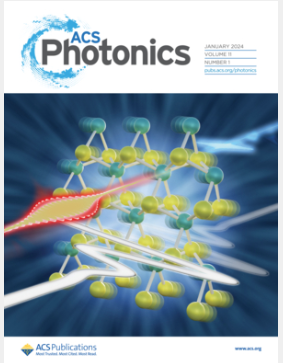钙钛矿的光致发光效率下降
IF 6.5
1区 物理与天体物理
Q1 MATERIALS SCIENCE, MULTIDISCIPLINARY
引用次数: 0
摘要
钙钛矿发光二极管的商业化前景取决于其在大载流子密度下的发光效率。在如此高的注入条件下,发光效率的降低可能会导致功耗的增加,并伴随着相关的退化和稳定性问题。在这里,通过对热输运和载流子产生-重组的详细建模,我们揭示了在高注入条件下导致发光下降的物理机制。我们表明,自加热导致减少辐射重组(双分子和激子)。由此导致的非辐射复合的增加和热耗散作为一种正反馈机制,导致钙钛矿的效率下降。实验结果很好地支持了我们的模型预测,这可能对钙钛矿光电子学和稳定性的降解感知热设计具有广泛的兴趣。本文章由计算机程序翻译,如有差异,请以英文原文为准。

Photoluminescence Efficiency Droop in Perovskites
The commercialization prospects of perovskite light-emitting diodes depend on their luminescence efficiency under large carrier densities. The decrease in luminescence efficiency under such high injection conditions could lead to an undesired increase in power consumption, with associated degradation and stability concerns. Here, through detailed modeling of thermal transport and carrier generation–recombination, we unravel the physical mechanisms that cause the luminescence to droop under high injection conditions. We show that self-heating leads to a reduction in radiative recombination (both bimolecular and excitonic). The resultant increase in nonradiative recombination and hence the thermal dissipation act as a positive feedback mechanism that leads to efficiency droop in perovskites. Our model predictions, well supported by experimental results, could be of broad interest toward the degradation-aware thermal design of perovskite optoelectronics and stability.
求助全文
通过发布文献求助,成功后即可免费获取论文全文。
去求助
来源期刊

ACS Photonics
NANOSCIENCE & NANOTECHNOLOGY-MATERIALS SCIENCE, MULTIDISCIPLINARY
CiteScore
11.90
自引率
5.70%
发文量
438
审稿时长
2.3 months
期刊介绍:
Published as soon as accepted and summarized in monthly issues, ACS Photonics will publish Research Articles, Letters, Perspectives, and Reviews, to encompass the full scope of published research in this field.
 求助内容:
求助内容: 应助结果提醒方式:
应助结果提醒方式:


